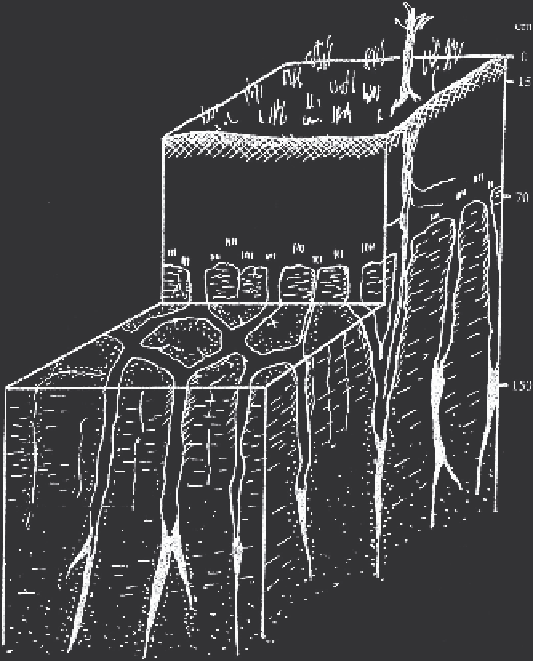Geoscience Reference
In-Depth Information
Fig. 11.5 Schematic representation of a soil profile with a fragipan horizon. (From Smalley and Davin, 1982,
after Van Vliet and Langohr, 1981.)
and animal burrows of various sizes. Reviews on the subject have been presented by Jones
(1971) and Beven and Germann (1982). Because soil drying and biological activity tend
to take place near the ground surface, pipes and macropores are usually most abundant
in the top soil layers and they tend to become less frequent with depth. Such structures
are usually obvious features of soil profiles at banks and road cuts.
In addition to these macropores, different other types of preferential flow paths have
been observed, which may also have ramifications for the relative transport of
pre-event
and
event
water to the stream channel. Recall that pre-event water, also called
old
water,
is the water present in the soil mantle before the onset of the precipitation, whereas the
event water, often called
new
water, is the water resulting from the precipitation. In one
type of preferential flow, the paths can often be observed at the surface of clayey and
loamy soils as cracks or fractures resulting from the shrinkage of the clay particles during
drying episodes. At least during the initial stages of a precipitation event, before clay
swelling closes them again, such cracks can facilitate the downward water movement in
the profile. A somewhat related type of preferential flow has been observed in fissured
fragipan horizons (Parlange
et al
., 1989), as illustrated inFigure 11.5. A fragipan is

